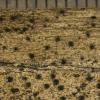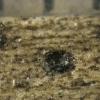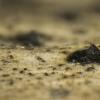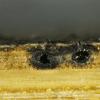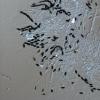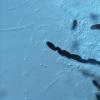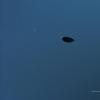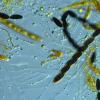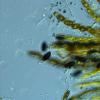
21-01-2026 16:32
Gernot FriebesHi,I need your help with some black dots on a lich

21-01-2026 16:48
Gernot FriebesHi,after my last unknown hyphomycete on this subst

20-01-2026 17:49
 Hardware Tony
Hardware Tony
I offer this collection as a possibility only as e

15-01-2026 15:55
 Lothar Krieglsteiner
Lothar Krieglsteiner
this one is especially interesting for me because

17-01-2026 19:35
Arnold BüschlenHallo, ich suche zu Cosmospora aurantiicola Lite

16-01-2026 00:45
Ethan CrensonHi all, On decorticated hardwood from a New York

18-01-2026 12:24
Hello.An anamorph located on the surface of a thin
Anthostomella on coconut palm
Roo Vandegrift,
16-02-2022 22:57
 Hello all! I've been wanting to be more active here, posting interesting fungi and participating in discussions of interesting fungi: I've always enjoyed lurking in these forums.
Hello all! I've been wanting to be more active here, posting interesting fungi and participating in discussions of interesting fungi: I've always enjoyed lurking in these forums. To start off, I have a very interesting fungus from the rachis of a coconut palm (cocos nucifera), collected in Miami, FL. I think it should be in Anthostomella, but I have not encountered many of the pseudostromatic Xylariaceous fungi (or maybe I've been avoiding them).
The ascocarps are solitary globose perithecia immersed in the substrate, with a somewhat long ostiolar neck and a region of pseudostromatic tissue above the perithecia, becoming a black, carbonized clypeus around the papillate ostiole.
Asci are short-stipitate, with a refractive apical apparatus wider than tall. I do not have any iodine stain at the moment, but will update with J+/J- when I get some (sorry about that!). From the combination of characters already present, I assume it will be J+, but we'll see.
There are abundant paraphyses between the asci.
Ascospores are ellipsoid, somewhat inequalateral, brown to dark brown, with a spore-length germ slit barely visible on the more convex side of the spore, and a very thin gelatinous sheath thicker on the polar ends of at least some of the spores;
16.2-21.8 × 6.9-9.0 ?m (mean = 18.8 × 8.0)
Anyone have any ideas? Also would love to know what references you use for Anthostomella and related fungi.
Many thanks,
Roo
Jacques Fournier,
17-02-2022 10:28

Re : Anthostomella on coconut palm
Hi Roo, this is indeed an interesting fungus.
The first striking and informative character you missed is that ascospores are different in front view and in side view, much wider in front view.
I tried the key in the book "A world monograph of Anthostomella" Lu & Hyde (2000) Fungal Diversity Press, the only comprehensive work on this genus, including all known tropical species. Other missing characters used in the key are iodine reaction and shape of the apical apparatus, ascal stipe length and germ slit lehgth.
Assuming that the apical apparatus is discoid and I+, the ascus stipe short and the germ slit spore-length, one can get to A. raphidophylli Lu & Hyde, known from Bromelia in Argentina and from palm in Florida.
They give ascospore size as 21.2 x 10.6 x 4.5 µm on average, taking into account both width dimensions, which agrees well with yours if both widths are mixed.
I don't know this species but it seems convincing, unless you find additional deviating characters.
Good luck,
Jacques
The first striking and informative character you missed is that ascospores are different in front view and in side view, much wider in front view.
I tried the key in the book "A world monograph of Anthostomella" Lu & Hyde (2000) Fungal Diversity Press, the only comprehensive work on this genus, including all known tropical species. Other missing characters used in the key are iodine reaction and shape of the apical apparatus, ascal stipe length and germ slit lehgth.
Assuming that the apical apparatus is discoid and I+, the ascus stipe short and the germ slit spore-length, one can get to A. raphidophylli Lu & Hyde, known from Bromelia in Argentina and from palm in Florida.
They give ascospore size as 21.2 x 10.6 x 4.5 µm on average, taking into account both width dimensions, which agrees well with yours if both widths are mixed.
I don't know this species but it seems convincing, unless you find additional deviating characters.
Good luck,
Jacques
Roo Vandegrift,
18-02-2022 16:03

Re : Anthostomella on coconut palm
Thanks Jacques, that's great!
I don't have any iodine stain at the moment, but should get some Melzer's next week: I'll post back with updates when I do. Good catch about the third dimension on the spores; I'll re-measure to take that into account. The germ slit is spore length, but difficult to visualize and harder to photograph: if you look at the 7th photo, you'll see an arrow indicating the germ slit barely visible.
Do you have a good source online for Lu & Hyde's 2000 monograph of the genus? I've found Lu's thesis version from the university; any idea if there were substantial changes before publication?
Peace,
Roo
I don't have any iodine stain at the moment, but should get some Melzer's next week: I'll post back with updates when I do. Good catch about the third dimension on the spores; I'll re-measure to take that into account. The germ slit is spore length, but difficult to visualize and harder to photograph: if you look at the 7th photo, you'll see an arrow indicating the germ slit barely visible.
Do you have a good source online for Lu & Hyde's 2000 monograph of the genus? I've found Lu's thesis version from the university; any idea if there were substantial changes before publication?
Peace,
Roo
Jacques Fournier,
19-02-2022 19:08

Re : Anthostomella on coconut palm
Hi Roo,
I guess that the book has basically the same contents as the thesis, just the layout different.
There are few molecular data about Anthosotmella, mostly published in Fugal Diversity. It would be great if you can obtain sequences from your collection.Cheers,
Jacques
I guess that the book has basically the same contents as the thesis, just the layout different.
There are few molecular data about Anthosotmella, mostly published in Fugal Diversity. It would be great if you can obtain sequences from your collection.Cheers,
Jacques
Roo Vandegrift,
02-03-2022 21:23

Re : Anthostomella on coconut palm
UPDATE! It took me a bit, but I finally got some Lugols, and you were right in thinking that this probably had ring-shaped ascus apical plugs: distinctly wider than tall, with a little bit of a wedge shape. It's also, incidentally, much easier to see the germ slits mounted in Lugols. I've added pictures to the main post, above.
I have re-measured the ascospores (taking your suggestion to measure in three dimensions, rather than just two); they are not terribly much narrower than they are tall! I used the germination slit and the asymetry of the spores as the marker of whether I was measuring across the "face" or the "side" of the spore (i.e., if I could see the germ slit in the middle of the spore and the spore looked equilateral, vs. if I could see the germ slit to the side and the spore looked inequilateral). New measurements are: 18.4-21.1 × 7.4-9.2 × 6.1-8.5 ?m (means = 19.7 × 8.0 × 7.8 ?m).
Sadly, the copy of Lu's thesis on the university website turns out to be missing many pages, including the key species descriptions I was looking for! I'll keep searching for a copy online somewhere; let me know if you have any ideas.
In the meantime, at least the key is mostly intact (missing the first page), and I have some of the species descriptions. From that, and the new measurements of the spores and ascus plug (3-4 x 1.5 um), I think the most likely suspect is actually Anthostomella palmaria. I like the look of A. raphidophylli in general, but the face view is much wider than anything I observed (nothing wider than 9.2, which they report as the short end of the range for that taxon); similarly, it seems close to A. calamicola, but that taxon has a distinctly cylindrical ascus apical plug.
My only qualm about calling it A. palmaria is the presense of the thin mucoid sheath and polar caps, which they do not report... I am, however, somewhat inclided to think that they just missed it, as its absense is not mentioned as distinguishing it from any other species, nor is its absense noted in the description.
So for now, we'll call it Anthostomella cf. palmaria.
Thanks again for the help!
I have re-measured the ascospores (taking your suggestion to measure in three dimensions, rather than just two); they are not terribly much narrower than they are tall! I used the germination slit and the asymetry of the spores as the marker of whether I was measuring across the "face" or the "side" of the spore (i.e., if I could see the germ slit in the middle of the spore and the spore looked equilateral, vs. if I could see the germ slit to the side and the spore looked inequilateral). New measurements are: 18.4-21.1 × 7.4-9.2 × 6.1-8.5 ?m (means = 19.7 × 8.0 × 7.8 ?m).
Sadly, the copy of Lu's thesis on the university website turns out to be missing many pages, including the key species descriptions I was looking for! I'll keep searching for a copy online somewhere; let me know if you have any ideas.
In the meantime, at least the key is mostly intact (missing the first page), and I have some of the species descriptions. From that, and the new measurements of the spores and ascus plug (3-4 x 1.5 um), I think the most likely suspect is actually Anthostomella palmaria. I like the look of A. raphidophylli in general, but the face view is much wider than anything I observed (nothing wider than 9.2, which they report as the short end of the range for that taxon); similarly, it seems close to A. calamicola, but that taxon has a distinctly cylindrical ascus apical plug.
My only qualm about calling it A. palmaria is the presense of the thin mucoid sheath and polar caps, which they do not report... I am, however, somewhat inclided to think that they just missed it, as its absense is not mentioned as distinguishing it from any other species, nor is its absense noted in the description.
So for now, we'll call it Anthostomella cf. palmaria.
Thanks again for the help!
Jacques Fournier,
03-03-2022 11:21

Re : Anthostomella on coconut palm
Hi Roo,
it's a fairly big book 376 pp, about 100$, subject to copyright, and I am not aware of a digitized version available online.
It is worth it, maybe you can find it in the library of a university and copy it for your personal use. Sure you will spot other and different Anthostomella spp. on palm leaves or bamboo and then need the book.
Cheers,
Jacques
it's a fairly big book 376 pp, about 100$, subject to copyright, and I am not aware of a digitized version available online.
It is worth it, maybe you can find it in the library of a university and copy it for your personal use. Sure you will spot other and different Anthostomella spp. on palm leaves or bamboo and then need the book.
Cheers,
Jacques

